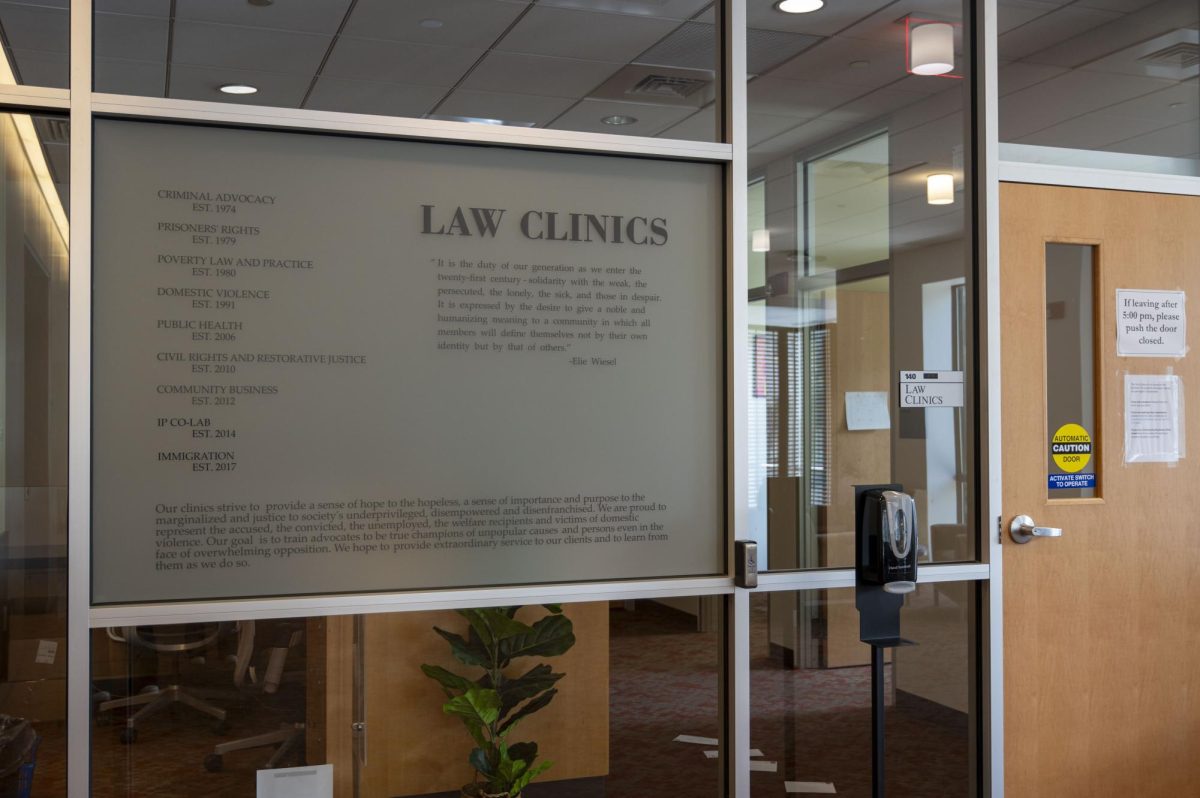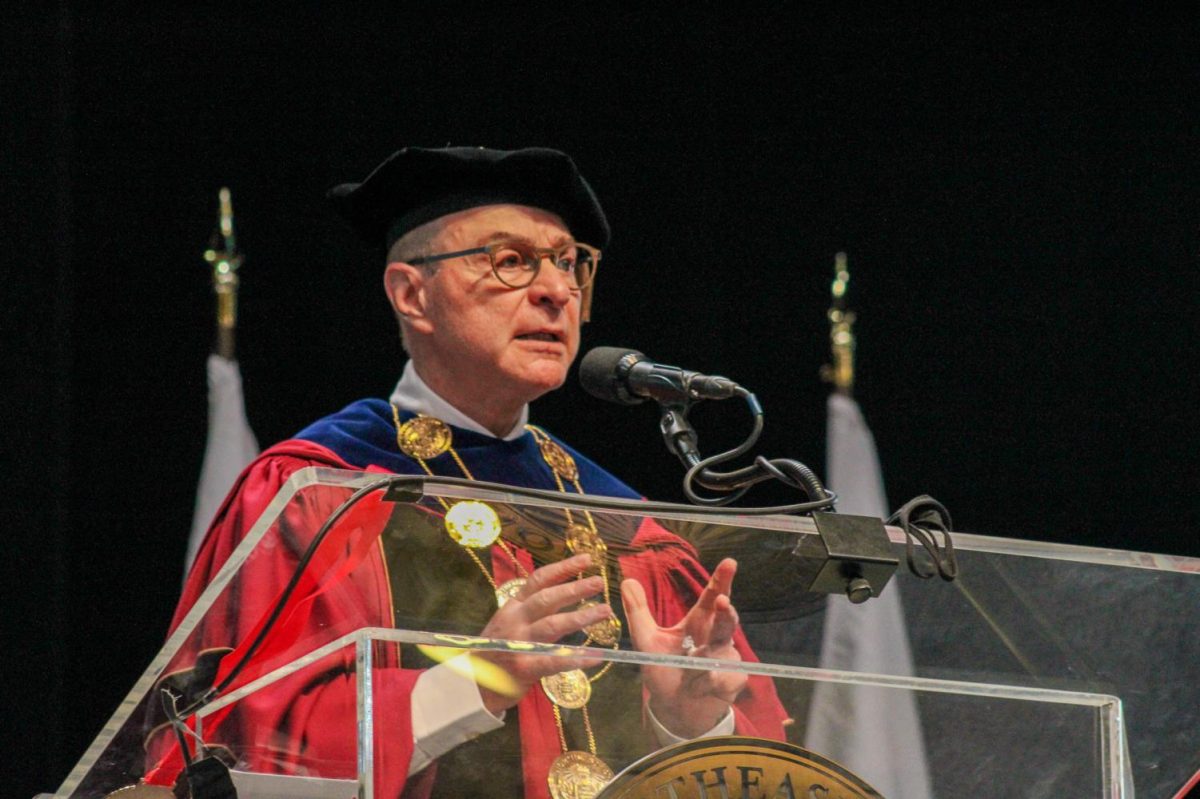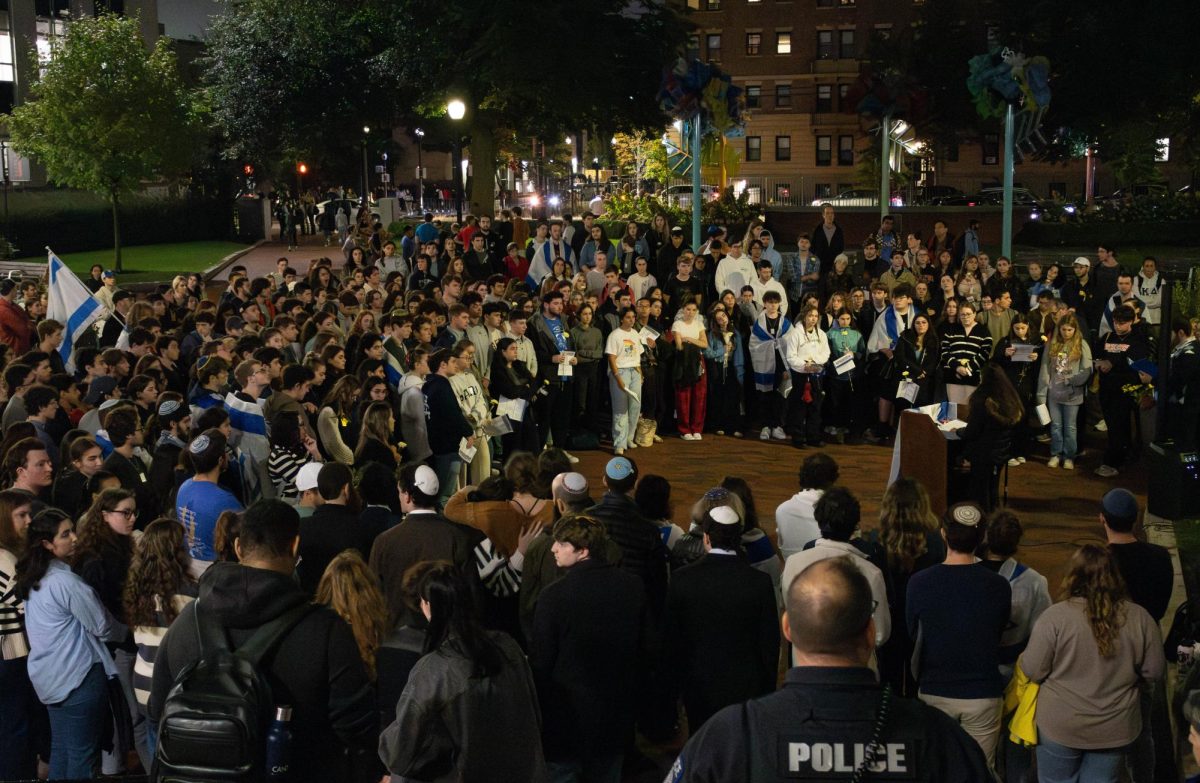
She smiled from behind the frame, her green eyes and pink flesh complemented by a yellow backdrop. The words, “Hold me, Love me,” scrawled in the top left corner alluded to the popular Beatles song “Eight Days a Week.”
“I can hear the song as I read it,” said Dianna Bowlby, 53, a Bedford resident. “It depicts what the Beatles always sang about – love.”
Bowlby and her twin sister, Debbie Larsen, donned Beatles T-shirts at a fine arts show featuring work by Ringo Starr and the Beatles at the Sage Building in Harvard Square June 7-10. The free show, sponsored by WZLX (101.7 FM/Boston) and the Harvard Square Business Association, featured more than 100 works of art and memorabilia from the four musicians.
Neal Glaser, Starr’s publisher and Paul McCartney’s exclusive distributor, organized the show, having spent more than 25 years collecting the pieces.
He was selling the artwork to raise money for the Lotus Foundation, Starr’s charity to benefit drug and alcohol rehabilitation, environmental issues, homelessness and other social issues.
The main focus of the exhibition was Starr’s work, a brightly-colored collection of cartoon faces. “Yer Baby,” a bright-eyed and pink-skinned man, winked from beneath his green locks.
For $5, visitors could enter a raffle to win Starr’s limited edition piece “Chef Alamode,” with its thin mustache and blue beret. Proceeds from the raffle went to the Harvard Square Homeless Shelter.
Glaser, who said he thought John Lennon’s “Bag One” series was the most interesting, said the work covered a wide range of styles.
“What’s interesting about the four Beatles is their artwork is very different,” he said. “Paul did abstract art, Ringo pop and John was an illustrator. George [Harrison] had enough sense to know he couldn’t paint.”
Harrison’s “pieces,” like “Here Comes the Sun” and “Piggies,” visually displayed the songs and were illustrated by watercolor artist Keith West. The former featured a sun breaking through the clouds illuminating two separate regions, one speckled by bats and lightning, the other with a mountainside castle and people wandering.
McCartney’s paintings faced Harrison’s from across the room. “Big Mountain Face,” a 1991 acrylic-on-canvas, bore a $4,400 price tag. The mountain’s browns, reds and tans dripped down its surface. A blue sky and yellow square illuminated the background.
“Beach Towels,” McCartney’s newest signed lithograph, hung beside the mountain face. A sun-drenched beach, decorated by red, green and yellow striped towels approached a splotchy blue ocean.
Displayed in the center of the gallery, Lennon’s “Bag One,” a fourteen-piece series of lithographs given as a gift to Yoko Ono portrayed the couple’s romance through scant lines on white.
Larsen regarded “The Family,” a photograph of Ono, Lennon and their son, Sean.
“John looks like he’s the happiest ever,” she said. “It truly shows the love they shared.”
Seth Pitman, a Tufts graduate, stopped by the gallery with two friends. His favorite piece was Al Hirshfeld’s “Beatles Anthology,” an etching of McCartney, Starr and Harrison producing in a studio while a photograph of Lennon looked on.
Tim Kyle of New Hampshire, agreed with his friend, saying, “It brings out the old man in him – the jowly old man.”
Bowlby, a Beatles fan since 1963 who purchased the colorful “RingoRama,” said it was “amazing” that the Beatles could produce visual art.
“My favorite part is to see how creative they were,” she said. “They weren’t just musicians; they were creators with their hands.”








